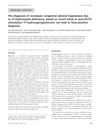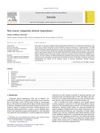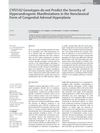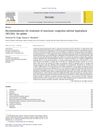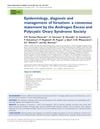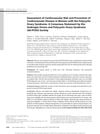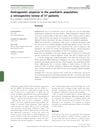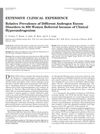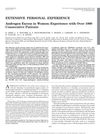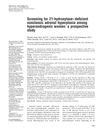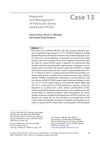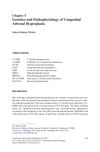Non-Classic Congenital Adrenal Hyperplasia Due to 21-Hydroxylase Deficiency Revisited: An Update with a Special Focus on Adolescent and Adult Women
May 2017
in “
Human Reproduction Update
”
non-classic congenital adrenal hyperplasia 21-hydroxylase deficiency androgen excess PCOS-like features serum 17-hydroxyprogesterone CYP21A2 glucocorticoids oral contraceptives anti-androgens hirsutism miscarriage risk metabolic issues cardiovascular issues fertility CPA ethinylestradiol dexamethasone LC/MS assays 17-OHP NCAH CYP21A2 gene birth control pills anti-androgen drugs hirsutism treatment miscarriage prevention metabolic health heart health fertility treatment cyproterone acetate ethinyl estradiol liquid chromatography-mass spectrometry
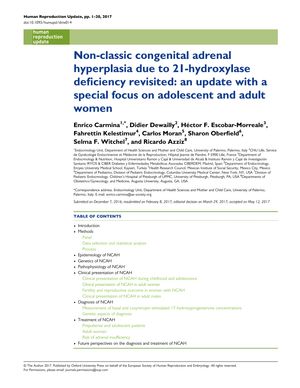
TLDR The update highlights that non-classic congenital adrenal hyperplasia is common in women with excess male hormones, requires specific hormone tests for diagnosis, and has various treatment options depending on age and symptoms.
The document reviewed non-classic congenital adrenal hyperplasia (NCAH) due to 21-hydroxylase deficiency, particularly in adolescent and adult women. It reported a 4.2% prevalence of NCAH among women with androgen excess and detailed symptoms that can occur from infancy to adulthood, such as accelerated growth and PCOS-like features. Diagnosis is typically made with serum 17-hydroxyprogesterone levels, with >2 ng/ml for screening and >10 ng/ml for a definitive diagnosis. Genetic analysis of CYP21A2 is recommended for confirmation. Treatment options include glucocorticoids for pediatric growth issues and fertility in adult women, and oral contraceptives and/or anti-androgens for menstrual and hirsutism control. Women with NCAH have a higher miscarriage risk, which may be mitigated by glucocorticoids during pregnancy. The document also noted the increased risk of metabolic and cardiovascular issues in adult NCAH patients and the importance of prompt diagnosis and treatment to improve fertility outcomes. Diagnosis relies on serum 17-OHP concentrations, and treatment varies by age and symptoms, with glucocorticoids being a common therapy. The document also mentioned a study with 28 patients where CPA combined with ethinylestradiol was more effective than dexamethasone for hirsutism. It emphasized the need for evidence-based management and genetic counseling for NCAH and highlighted future diagnostic and treatment prospects, including the use of LC/MS assays for more accurate 17-OHP measurement.
